Sustainability & Innovation: Adam Mott, The North Face
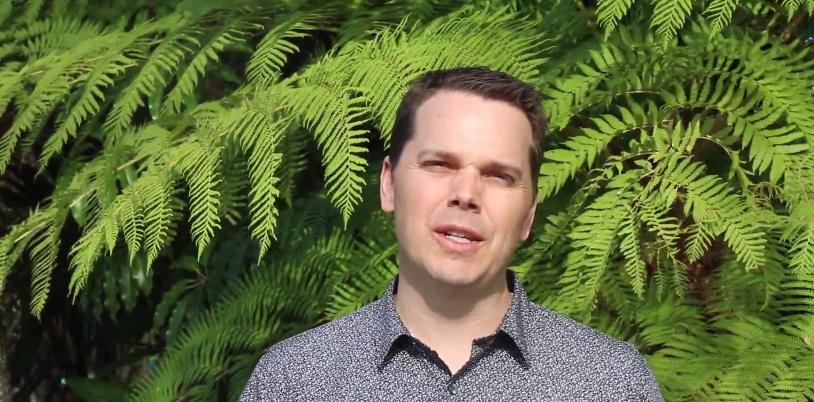

At this year’s Sustainable Brands conference in San Diego, we were challenged by Janssen Pharmaceuticals to ask leaders at the conference what the word "innovation" meant to them. Then, more specifically, we asked how innovation may or may not drive advancements in sustainability. We got a terrific range of responses, which we've got documented in a series of short video interviews. You can follow along here.
In this video, Adam Mott, director of sustainability for the North Face, talks about how intentional innovation is driving sustainability at the company. In particular, he discusses the "backyard hoodie" project -- a goal to create a sweatshirt completely sourced within 100 miles of the company headquarters -- which forced new innovations on the company which are now paying off elsewhere.
How Certified Renewable Energy Can Power A Sustainable Economy And A Sustainable Future


Submitted by Natalia Gorina
This is the most recent article in our series on Energy. For more articles, go to http://www.csrwire.com/blog/series/83-energy-powering-sustainable-futures/posts
For a growing number of companies, electricity is a prime resource in the value chain. However, several global corporates have increasingly come under fire from the general public, shareholders and major NGOs with regards to energy procurement. The failure to adequately manage corporate energy can leave a company vulnerable to risks, such as changing regulations and legal requirements. What is more, being seen as a big polluter carries detrimental effects for any brand.
More and more companies have set themselves a target of growing the share of renewable energy in their consumption. These commitments have been reflected in the global investments in sustainable energy: the past year witnessed a steep increase of green energy investments worldwide, with a surge of a solid 17% to US$270 billion according to the 2015 report by the United Nations Environment Programme. Leading businesses and renewable energy experts have also joined forces to form RE100, a global initiative aimed at motivating and recruiting major companies to use 100% renewable power across their operations. The initiative is also a reflection of the wider interest to disclose and communicate corporate performance in energy efficiency: calculating and, more importantly, reducing emissions from purchased or acquired electricity (“scope 2 emissions”) is a prerequisite for inclusion in the CDP’s prestigious Carbon Disclosure Leadership Index.
Nonetheless, joining initiatives and disclosing data alone will not be enough to boost corporate brand image and ranking, nor to ensure the “greenness” of energy. A key challenge for today’s companies when consuming electricity is the difficulty of tracing directly whether the electricity was produced using renewables or fossil fuels and nuclear.
To take larger strides in increasing the use of renewables, it is essential to be able trace the origin of power. The need for reliable certification systems has never been more acute. Renewable energy certificates (RECs) contain and disclose the renewable sources from which the electricity is consumed and are issued for every megawatt-hour (MWh) of electricity produced by a power station. However, only certain high-quality RECs with eco-labels ensure that the sources of energy are additional – in other words that the purchased renewable energy certificates have had or will have an impact on the development of new renewable energy installations and yield added ecological value. Additionality concerns the fact that RECs help fund new renewable energy projects that would not have been realised without the financing coming from the sale of the RECs. Such RECs provide buyers in the voluntary market with the convenience and flexibility in meeting their renewable energy goals, while cost-effectively routing capital to further renewable energy investments.
An example of a high-quality REC is GoldPower, a global REC product offered by South Pole Group and backed by thought leaders such as WWF and WindMade. Major market influencers and RE100 signatories such as SAP have already tapped into the pool of solutions offered by the premium renewable energy certificate: by sourcing GoldPower RECs from wind power in Turkey, SAP not only enables the construction of new turbines, but also contributes to the further development of renewable energy generation in the region. In addition to ensuring the production of new renewable electricity, the GoldPower project in Turkey is truly powering a sustainable future: SAP’s certified renewable energy investment not only helps drive the operations of the software provider, but equally the funding needs of three primary schools in the Mersin province of Turkey. Similarly, PwC has purchased over 24,000 Mwh of GoldPower sourced from wind farms on Taiwan’s west coast, saving almost 26,000 tonnes of greenhouse gas emissions. PwC’s purchase also helps create employment in the remote fishing villages around the wind farms, and prevent environmental problems like acid rain, which would result from fossil-fuel extraction.
As in the case of SAP and PwC, companies are becoming more demanding about how exactly their green power is produced. Leading companies are already leveraging renewable energy certificates to reach their targets and reflect an essential character of their brand. The unique capacity of high-quality RECs to secure new renewable energy production, mitigate business risks and engage local stakeholders in projects is an indispensable asset in the global pursuit for renewable energy and a greener economy.
This is the most recent article in our series on Energy. For more articles, go to http://www.csrwire.com/blog/series/83-energy-powering-sustainable-futures/posts
3p Weekend: 10 Ways for Women to Gain Leadership Experience
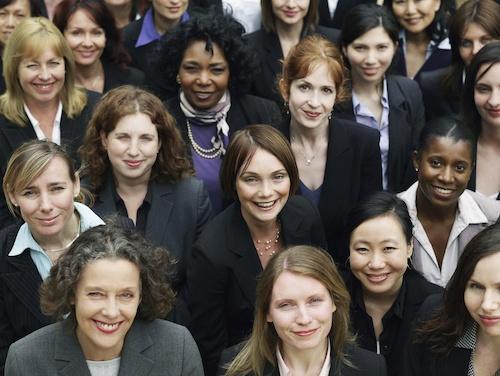

Despite data that shows having women in leadership positions improves a company's financial returns, the number of women at the top of large companies remains astonishingly low.
According to the Pew Research Center, 26 women are CEOs of Fortune 500 companies, representing 5.2 percent of Fortune 500 CEOs, Andrea Newell reported as part of our ongoing series on women's leadership. Pew’s most recent numbers (2013) report that only 1 out of 6 board members for Fortune 500 companies are women. The glass ceiling may be shrinking, but it still very much a reality for millions of women in the business world.
For women who hope to be part of the movement that turns those numbers around, the first step is to gain leadership experience. Here are 10 ideas on how to get started.
1. Talk to your supervisors ...
For leadership opportunities inside the office, the best place to start is with your supervisors. If they're worth their salt, they will help you develop a "stretch" project of which you can take ownership. Big or small, the project can help you learn on the job while helping the team, and your bosses will likely be impressed that you asked.
2. ... Or just raise your hand
We all know that moment in the staff meeting: The bosses ask for someone to take the lead on researching a new project or building out a new resource and then ... crickets. Take initiative, and be the one to raise your hand! Your supervisors will be grateful you rescue them, and -- even if the task seems inconsequential at first -- it may very well open the door for a leadership opportunity down the road.
3. Take a course
Someone who knows her speciality and constantly works to improve her skills has all the trappings of a good leader. To fit the bill, plan on taking at least one course that enhances your skill-set each year.
In many cases, your company will reimburse you for continuing education related to your position, but don't assume you have to shell out a pile of cash in order to improve your skills. Your yearly self-enhancement could be a free webinar, an online workshop or an accelerated training program -- whatever it takes to make sure you get the latest information that's relevant to your field. If you're interested in the sustainability space, TriplePundit's GRI Certified Sustainability Reporting Courses can give you a leg-up.
4. Do some volunteering
Helping others is a great way to gain valuable experience while making yourself feel good. Pick a cause that matters to you, and search out local opportunities where you can lend a hand.
And don't be shy about your desire for a leadership role. Saying something as simple as, "I'm passionate about your cause and would love to help out in a more meaningful way through leadership opportunities," can go a long way. Many local volunteer-based organizations have very few paid employees, if any, and they'll likely be thrilled to find someone willing to take on a leadership role for free.
5. Oh, and you can volunteer in the office, too!
Looking for more leadership opportunities in the office? Green teams and other workplace volunteer opportunities, especially those outside your main purview, can be just the ticket.
If your office doesn't have a green team or is lacking in volunteer opportunities, talk to your boss about getting this going. It may seem intimidating to knock on a supervisor's door with something not directly related to your everyday tasks. But doing so proves you care about and are engaged with your job, and also positions you as a de facto leader of your new green team.
6. Get active in your community
Taking on a leadership role within your own community looks fantastic on your resume. Again, it's important to zero-in on something that interests you, or you're likely to burn out with the added commitment. Passionate about preserving historic landmarks? Look into positions at your local historical society or zoning hearing board. Love green spaces? Your local horticultural society may be a perfect fit.
Just remember: Your leadership experience -- both inside and outside the workplace -- should reflect your personality. So, keep that in mind when choosing how you can best land a hand in your neighborhood.
7. Plan an event
Who said leadership can't be fun? Try your hand at managing a 'team' by planning a big event for a friend or family member.
Whether it's a wedding, a retirement party or a killer camping trip, doing the planning can help you gain valuable skills, like getting everyone on board, developing a plan and getting people to go along with it, and making sure everything that needs to happen happens. These skills are necessary in a leader and will serve you well in future endeavors, whether it's a new project in the office or managing the guest list for your cousin's bat mitzvah.
8. Get sporty
Looking to get active while honing your leadership skills? An adult sports team in your area provides the best of both worlds. According to a 2014 survey conducted by the Ernst & Young's Women Athletes Business Network and espnW, the majority of women executives surveyed say that a sport background can help accelerate a woman’s leadership and career potential, and has a positive influence on hiring decisions.
9. Look to your family
Research indicates that women are far more likely than men to take time off from work to care for a child or a sick family member. While some have pointed to this trait as a reason for the gender pay gap, it's actually a quality that can make you better leader.Things like looking after an ailing relative, babysitting a youngster or planning a family event can all help you gain leadership skills, including empathy, managing stress and speaking on behalf of others.
10. Do something for yourself
It may sound counterintuitive, but the first person you successfully lead may be yourself. To help realize the born leader inside of you, commit to a big personal project and see it through from start to finish. This will not only give you an idea of what it takes to lead, but also leave you with a feeling of fulfillment -- which makes you feel more engaged in all aspects of your life, including work.
Image credit: Shutterstock
Rubicon Bakery Thrives with Help From Formerly Incarcerated


Rubicon Bakery wasn’t the most appealing business to buy when it was put on the market in 2009. The bakery, located in the heart of Richmond, California, a city consistently ranked among the most dangerous in the U.S. year in and year out, had antiquated equipment, negative profits and ex-cons, addicts and homeless workers operating the business.
Yet, when former Wall Street analyst Andrew Stoloff was asked to consult the failing bakery, he fell in love with the business’ mission to create second chances for people who have made poor decisions. The bakery entered the market on the condition that the building remains standing and that the new owner continues to hire employees with darker pasts.
With the less-than-sexy offer for a business with so many restrictions, the bakery lingered on the market. But as Rubicon’s time on the market grew, so did Stoloff’s attachment to the bakery’s mission of offering second chances to the down-and-out employees. As the owner of the Red Tractor Cafe, a lunch and breakfast join in nearby Dublin, California, and former Wall Street worker, Stoloff knew a thing or two about turning an unsuccessful business into a money-making company.
Stoloff took a chance on Rubicon Bakery, and today, the business takes in about $6 million each year, a dramatic improvement from the tens of thousands of dollars a month it was losing just six years prior. The popular wholesale bakery sends its privatized cakes, cookies, brownies, cupcakes and marshmallows to big time grocery stores, including Whole Foods Markets.
It didn’t take long for Stoloff to realize the high ingredient and labor costs were driving the business’ profits down. Before the new owner purchased a nearly $100,000 industrial dishwasher, workers spent hours and hours a day scrubbing hundreds of cake pans by hand. Eliminating such costs also eliminated the labor involved and created an opportunity to work on making more products.
Rubicon Bakery, a certified B Corp, has expanded into a business with more than 100 full-time employees, most of whom have come from rough pasts. On a typical job application, it asks whether the applicant has been arrested or involved in a crime. Stoloff said he chooses employers that check “yes.” In an area illuminated by the basketball movie Coach Carter, Richmond is not a very forgiving city for people looking to turn their lives around.
With murders, drugs, rape and carjackings infesting the city, it’s easy for ex-convicts and recently released prisoners to return to the streets and commit the same crimes that landed them in jail. Business owners and employers hesitate to hire former convicts and drug addicts, but without job opportunity or a stable income, it’s easy to go back to their old ways. Rubicon Bakery simply ignores its employees past and honor the mission of giving capable people who’ve made mistakes a second chance. Stoloff also provides medical insurance and three weeks paid vacation and sick time for all of his employees.
Rubicon Bakery doesn’t only provide jobs to those in need, it provides careers. Some employees have found salvage in the inner-city bakery for more than 20 years, and have climbed the ladder into important, decision-making positions.
Seventeen states and Washington, D.C., have eliminated the box on applications asking whether or not the applicant has committed a misdemeanor or felony. Target, Wal-Mart and Koch Industries followed suit and also ignore applicants past on the application. “Ban the Box” is now a nationwide push to urge employers to give second chances to those who have made mistakes by removing the criminal question on applications.
Photo by Jeremy Brooks/Flickr
Helping Diverse Teams Function Well


By Kevin Lawrence
There’s plenty of research to argue that diversity in the workplace is beneficial to businesses: heightening innovation, increasing revenue and dramatically improving the ability of businesses to capture new markets. But diversity can also bring well-documented problems: notably an increase in workplace tension. Differences in age, gender, culture, language and location (especially as interaction becomes virtual, rather than face-to-face) can lead to poor communication, lack of trust and lack of cooperation between colleagues. So how do managers harness the benefits of a diverse team while avoiding the problems?
Understand the issues
The first step for anyone managing a diverse team is to make sure they understand the issues that can cause problems within these teams. Last year, researchers from the MIT Sloan School of Management and America’s Northwestern University argued that people tend to feel most contented in the company of people who appear similar to them. There is less comfort in a diverse team. It’s important, therefore, that from the start managers are very clear about each person’s role and responsibilities on the team. This should be spoken about explicitly, to prevent a situation in which team members feel they have to fight to carve out their place. At the same time, it’s important to establish (and explain) procedures team members can use to request opportunities for stretching their skills and to provide forums in which they can express any concerns.
Explain the benefits
The next key issue for a manager is to explain the benefits of diversity to the team. When diverse teams succeed, they do so because they value the different perspectives of team members. They debate different ideas, different approaches and different priorities. This – done in a spirit of respect and in pursuit of a defined common goal – increases both creativity and market awareness. Managers of diverse teams can help this process by explaining that these debates are valuable, making sure everyone’s voice is heard and framing clear goals for the debate. At the same time, managers need to be very clear that while intellectual conflict is useful, personality conflict is not. When this occurs it needs to be addressed as a matter of urgency.
Prioritize effective communication
There are certain managerial practices that are valuable for any team. Sometimes having a diverse team makes it easier to see why there is a need for these. Examples include:
- Understanding what motivates each person on the team
- Understanding how every member of a team believes they can best contribute to the team’s work
- Checking that messages have been understood, so that inter-team communication remains strong
At the heart of a well-functioning diverse team is respect for difference, expressed within a framework of shared team goals.
Supporting diverse teams
There are several practical ways in which managers can support diverse teams. One useful approach is to provide training in relationship skills: how to communicate, how to resolve conflict, how to work as a team. These are skills that are often ignored in favor of technical training. But providing training in these areas sends a clear message that these are skills that are valued by the senior leadership team.
It’s important for managers to take responsibility for integrating new members of the team into an organization. Managers should take the time to work out who the new person needs to know across the company, explain who those people are and why it’s important to meet them. They should also introduce them to these staff members: wherever possible, providing tasks that allow the new team member to work alongside the established staff member. This could be a simple process of asking different staff members to run through different jobs with the newcomer, to coach them in key processes or give them site tours. The effect of this is to build networks and facilitate working relationships.
Invest in informal mentoring
This practice supports another effective way of helping diverse groups work well together: creating a culture of informal mentoring. Managers should demonstrate their own commitment to sharing information and skills – through coaching and mentoring. They should also facilitate this amongst staff members: asking staff to help one another, or showing appreciation for the behavior if it occurs unprompted. Mentoring builds trust. When teams trust one another they are happier to offer their ideas and insights in a spirit of constructive debate, rather than worrying that their ideas will be dismissed or devalued.
Diversity breeds success
With a diverse team, it’s critical that managers actively take the lead in building a supportive culture in which team members are valued for the differences they bring. This, in turn, allows teams to respect one another’s contributions and allows ‘difference’ to spark creativity, rather than conflict.
Kevin Lawrence is a Managing Director at the Odyssey Group. He specializes in leadership and management development, change, executive team development and organizational development strategy.
The Recycling Industry is Losing Money -- and Fast
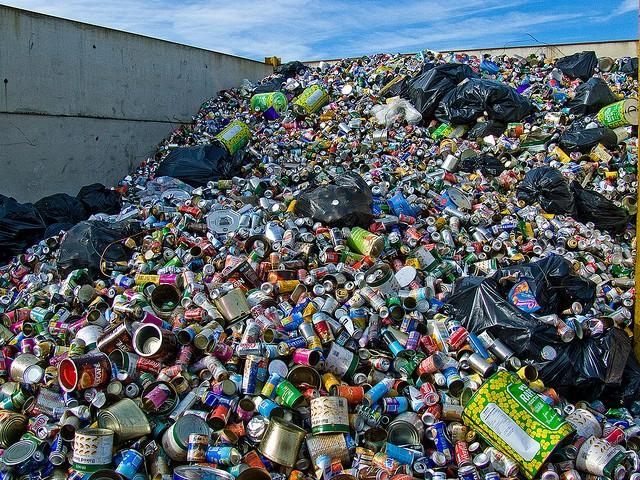

It seems like easy work. You finish a bottle of water, toss it in the blue recycling bin and sleep easy at night knowing you contributed to helping the environment preserve products that can be salvaged. Recycling can reduce greenhouse gas emissions, conserve natural resources like water and trees, save energy, and prevent pollution. But it also costs millions of dollars.
Waste Management and other leading recycling companies recently admitted that more than 2,000 towns and cities are paying to dispose of their recyclables. The recycling industry is losing money at astounding rates, with facilities unable to handle the smorgasbord of recyclables in timely enough fashion to produce profits. With environmentalists and lawmakers urging for bigger blue bins, they are backhandedly encouraging consumers to not sort their recyclable items.
The blue recycling bins sometimes trigger consumers to just throw in anything they deem recyclable without even questioning the practicality of reusing such an item. This leaves the workers for Waste Management not only stuck sorting items from glass to plastic, but also determining what’s actually recyclable and what’s just been thrown in the bin.
The once-profitable business for cities and private employers is now becoming a profitless enterprise, and the future doesn’t look great. Waste Management’s recycling division reported a $16 million loss in the first quarter of this year alone. The Houston-based company has pointed to closures for the temporary solution, with 1 in 10 of its biggest recycling facilities shut down as a result of the losses.
Globally, falling oil prices, a powerful U.S. dollar and a weakened Chinese economy have twisted the prices for American recyclables downhill worldwide. While the U.S. has seen a large increase in cardboard use thanks to the online shopping industry, the Chinese demand for such products is reaching an all-time low.
Washington, D.C. residents’ carelessness while recycling left the city’s share of Waste Management’s profit depleted by more than 50 percent, driving the price of processing recyclables to nearly $63 per ton.
The increase in recycling participation has certainly seen positive repercussions for the environment, but recycling the wrong way only creates headaches and losses of profit for big companies.
Environmentalists suggest that composting is the solution to recycling’s inefficiencies. With cultured West Coast cities like San Francisco, Seattle and Portland instituting citywide composting, waste has been reduced significantly. Composting can have a more direct impact on environmental issues by compartmentalizing items and sifting through trash before the dumps have a chance.
The EPA estimates that around 55 percent of all U.S. waste comes from households -- meaning engaging the public around proper waste disposal is crucial. In 2010, more than 85 million tons of trash --- of the 250 million tons thrown out -- was diverted from landfills and separated as recyclables. According to the EPA and a CBS News article, that’s similar to removing the emissions of 33 million cars.
While the recycling industry is hurting because the commodity level of certain items is taking a hit, it still has a dramatic impact on the environment. With Americans recycling at impressive levels, companies such as Waste Management may have to find a better way to handle all of the waste it receives.
Image credit: Flickr/allybeag
Editor's Note: An earlier version of this post mistakenly reported that 5 percent of U.S. waste came from households. The post has been updated with the correct statistic, 55 percent.
One Grocery Store Chain's Plan to Shrink Food Waste


Many of us Generation Xers grew up around grandparents who survived the Great Depression. My own grandparents used to say, “Waste not, want not.” They pounded it into me to not waste food. I really try to not waste food and only buy the fruits and vegetables I need. I cook in smaller batches so I actually eat leftovers. However, not all food waste is on the consumer end. Much of it occurs on the farm, at the distributors, in the packaging process, or at the grocery store.
Food waste really is a big problem in the U.S. where around 25 to 40 percent is wasted. There are major inefficiencies in the American food system, as a National Resources Defense Council (NRDC) paper points out. In 2008, food losses in the U.S. totaled an estimated 43 billion pounds, or 10 percent of the total food supply at the retail level. However, the losses that retail chains are responsible for are even greater, according to the NRDC. The USDA estimates that supermarkets lose $15 billion a year in unsold fruits and vegetables.
There are many different reasons why grocery store chains are responsible for so much food loss and one of the reasons has to do with consumers. We tend to not pick fruits and vegetables that are misshapen, despite the fact that they are just as tasty and nutritious as their better looking counterparts. One grocery store chain is taking a gamble on selling this imperfect, perfectly edible produce. That chain is Raley’s and it will launch an imperfect produce program in July.
Raley’s will partner with Imperfect Produce to help sell imperfect looking fruits and vegetables. The grocery store chain will launch a pilot program in 10 Northern California stores starting in mid-July. The program is called “Real Good” and will sell imperfect produce at a lower price.
“Raley’s is proud to take a meaningful step forward to help reduce food waste in our country," said Meg Burritt, Director of Wellness & Sustainability, in a statement. “Our ‘Real Good’ produce will educate our customers about the food system, offer our growers a new pathway to market their produce, and provide greater access to produce that is aesthetically imperfect, but just as flavorful and nutritious.”
As more stores adopt programs to reduce food waste, food waste overall will be reduced in the U.S. That will be good news. Food should not be wasted anywhere. It is particularly sad that it is wasted in the U.S. where there is an abundance of produce but many who are food insecure. According to Feeding America, 49.1 million Americans lived in food insecure households in 2013. Perhaps discounting imperfect produce will help more families afford the fruits and vegetables all of us need to be healthy.
Photo: Flickr/David Billingham
Ford Launches U.S. Car-Sharing Pilot
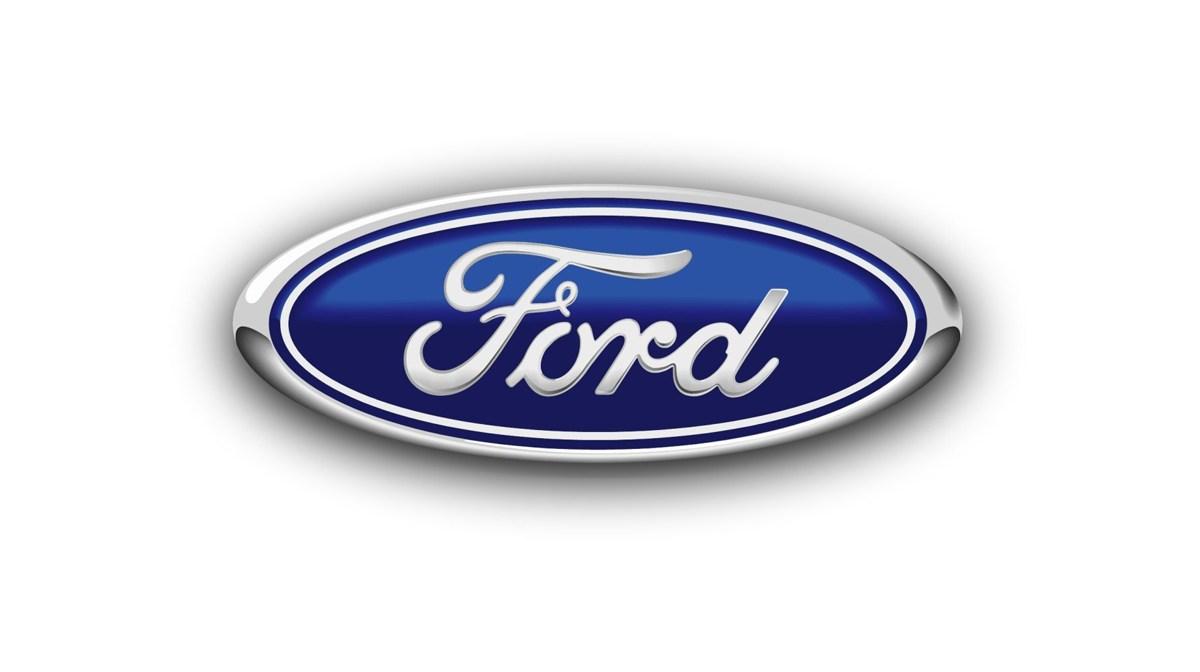

It’s a big job for companies today to stay in front of the changes that are sweeping the business world. As someone who lives in Rochester, New York, I have seen firsthand how a company like Eastman Kodak has gone from a dominant global enterprise to a poster-child for precipitous technological near-extinction. All the massive quantities of film, paper, chemicals and processing that were once the hallmarks and the lifestream of the photographic world have now been replaced by much smaller quantities of memory chips and screens.
Another area where this could happen is in transportation. Surveys indicate that young people today, especially those in cities, are far less interested in owning a car than their predecessors were. This could have a major impact on the gigantic automobile industry that last year alone sold over 70 million cars. It seems likely the “personal mobility” pie is going to get smaller, courtesy of things like the sharing economy. Today’s manufacturers are trying to read the tea leaves and see how they can transition to address the evolving needs of consumers.
That is why Ford’s finance arm, Ford Credit, just announced a six-month experiment that will help them get involved with and learn about how the sharing economy is reshaping the transportation world into one of smart mobility.
I spoke with David McClellan, VP of global marketing for Ford Credit, about the project. He told me that letters were sent out at the end of May to 14,000 Ford Credit customers in six US cities: Berkeley, Oakland, San Francisco, Portland, Chicago, and Washington, D.C. The customers were invited to sign up with the car-sharing provider Getaround.
Ford has no financial interest in this project at this time, McClellan told 3p. When asked what’s in it for Ford, he said: “We’re interested in understanding our customers’ needs, and we see this mobility space in the sharing economy is something worth trying. So, what’s in it for Ford Credit is to learn. What’s in it for the owner is to earn some extra income, and what’s in it for the renter is to experience Ford vehicles.
"The kind of person who is going to rent this out probably doesn’t own a vehicle today and needs to get from point A to point B. Perhaps, as their needs change, and they’ve had a great experience, they will look favorably upon Ford in the future.”
Once the car is registered on the Getaround site, the owners can decide when the car is available to be rented (up to a full day) and how much they will charge. Renters will make use of an app on their smartphones to locate the vehicle and rent it.
Some of the things they'll look at are: how many people register, what types of vehicles are being rented and who rents them. “The initial response has been very positive,” McClellan said.
He would not speculate on what will happen once the pilot is completed, though he did say, “It’s a really neat concept, and we’re really excited to learn what happens.”
Ford CEO Mark Fields also announced a similar program in the U.K. with London’s easyCar Club.
Ford is not the first to dip a toe into this pond. General Motors has a partnership with San Francisco-based Turo, another peer-to-peer sharing service similar to Getaround. In Europe, several carmakers have taken a stake in firms like car2go (Daimler), DriveNow (BMW), Quicar and Greenwheels (Volkswagen).
The Future of Wearable Tech


Humankind has always been driven by a desire to augment our natural abilities in order to better adapt to and control our environments. From the early primitive tools of the Stone Age to emotional reflecting sweaters and Google Glass, it has been a long ambitious road towards human, social and technological advancement.
We are now entering into an exciting new age of wearable technology, one of the most important eras in the history of computing. Technology is no longer just for our desks and pockets. It is now subtly displayed on our bodies and will one day even be merged with them.
In the next five years we will see the rapid development of wearable technology that is integrated into every aspects of our lives. Wearable technology will be used to help record the world around us, control our environment and communicate information between one another.
Much of the innovation will develop first through wristbands. As devices become smaller, faster and more feature packed, other jewelry like devices will follow - such as rings and necklaces. We will also see an influx in smart clothing within the next couple of years. It is predicted that by the year 2018, we will rely most heavily on embedded devices - technology that is physically embedded into our bodies. This is not a Stephen King novel, this is actually the future of wearable tech.
Connected Intimacy
Wearable technology is adding new layers to our personal relationships by extending the reach and power of how we communicate and share details about ourselves regardless of distance. They provide a continuous link between people, simulating closeness and changing the way we understand one another.
A great example of this is the T.Jacket, a hug simulation jacket which enables parents to calm their children via mobile devices. The jacket uses embedded air pockets to simulate hugs without human contact. Initially developed with autistic children in mind, the T.Jacket has an even wider application for parents who spend a lot of time away from home.
According to a study by the Centre for Creative and Social Technology, 36 percent of American wearable tech survey respondents said that they use wearable technology to enhance their love lives. Tactilu is a bracelet that is capable of transmitting touch between to people even when they are miles apart. While Bond is a smart watch that uses touch to save long distance relationships.
Physical and Emotional Mirrors
Another emerging trend that we see in wearable technology, is the use of embedded tracking devices which can be used to monitor the health and physical performance of users. For example, this tooth embedded sensor relays eating habits to your dentist. The device fits discreetly in between the wearer's teeth and can differentiate between eating, speaking, smoking, drinking and breathing.
This smart diaper detects health issues for babies and communicates them to parents via smartphone. By scanning the QR code on the diaper, the parent can check to see if the baby is suffering from at UTI, if the kidneys are healthy or if the child is dehydrated. It will even recommend if you should take the child to see a doctor.
However, wearables will not only be used to track physical health, but can also be used to reflect emotional health. For example, the Ger Mood Sweater by Sensoree interprets emotions and displays the wearer’s mood instantly as an interactive light display. Sensors in the clothing detect bodily rhythms along with excitement levels and translates the data into a palate of colors.
Empathic Wearables
The Doppel is an example of empathic technology. It is a bracelet that uses changes in rhythm to change your mood. The human body has a natural response to different types of rhythm. Whether it’s synching to the beat of a song, or to someone else’s heartbeat, these changes in rhythm affect us throughout the day. Doppel captures these rhythms in a wearable that emits a pulse on the inside of your wrist, emitting signals that no one else can see or hear.Doppel can naturally make you feel more alert or relaxed on demand using the innate human response to rhythm. It’s designed to keep you alert for a long work day, or calm and relaxed in stressful situations. It works in the same manner as music, up-beat music energizes you while down-beat music has a calming effect. Doppel does this with a vibration you feel, rather than hear. You can use it to wind down to fall sleep, to keep going through that really long meeting or to stay calm when you’re nervous.
“The human machine is the most complex and powerful machine there is. Technology should not just monitor us, but actively help us to realize our potential” said the creators of the device, Team Turquoise. Their mission is to create a whole new market for wearables, bridging the gap between mindfulness, well-being and technology.
“We do not see the future of wearables as blinking lights and flashing screens, but rather a softer technology that works symbiotically with us, helping us to be the person we want to be.”
Photo Credit: Team Turquoise, Sensoree, T.Jacket
Sustainability & Innovation: Paulette Frank, Johnson & Johnson

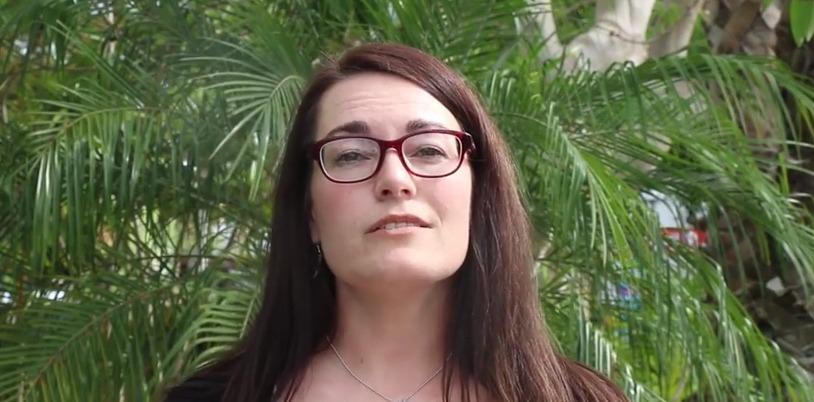
At this year’s Sustainable Brands conference in San Diego, we were challenged by Janssen Pharmaceuticals to ask leaders at the conference what the word "innovation" meant to them. Then, more specifically, we asked how innovation may or may not drive advancements in sustainability. We got a terrific range of responses which we've got documented in a series of short video interviews. You can follow along here.
In this video, Paulette Frank, VP of sustainability for Johnson & Johnson, explains how innovation helps the company deliver better products for consumers and how J&J brings the environment in as a "stakeholder" in the innovation process.
